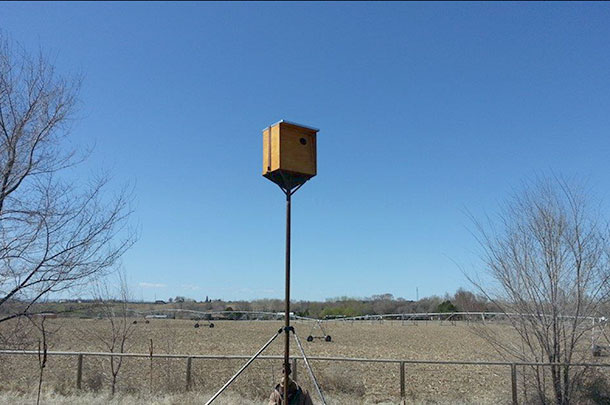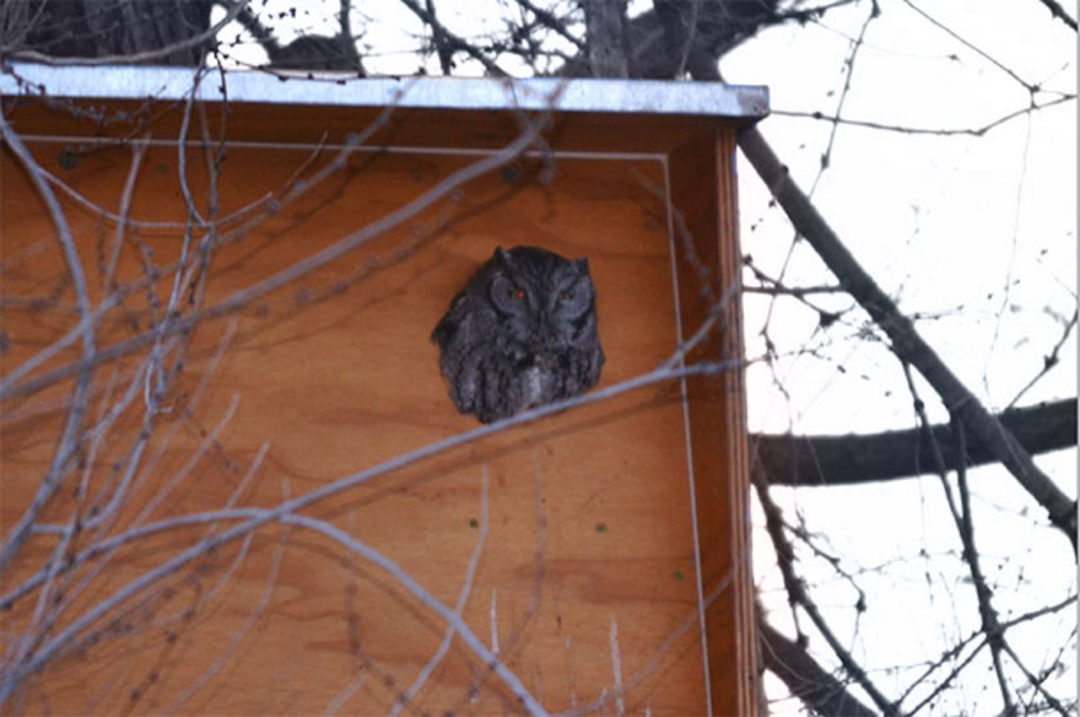It’s no secret that these pesky little varmints can cost growers 40 percent or more in forage loss, depending on the rodent species and size. Using conventional methods can help mitigate the problem, but it often comes at a high price and in some cases, can contaminate resources.
Setting up owl boxes to encourage natural rodent control isn’t new to the forage industry. However, within the last few decades, the concept of natural control has become fairly popular among growers and has led many to ask the question, “Are owl boxes really effective?”
A producer’s perspective
Brad McIntyre, a fourth-generation hay and row crop farmer in northwestern Idaho, started using owl boxes on his family’s 1,500-acre farm nearly three years ago. Like many farms in the area, the McIntyres fought a constant battle with voles and other rodents that inhabited their hay fields.
By implementing practices such as no-till and adding cover crops to their rotations, the McIntyres noticed that they were not only improving soil health, but they were also providing an additional cover for an abundance of voles. Looking to maintain a natural system, the McIntyres turned to owl boxes for their source of control.
“Since we’ve installed the owl boxes, we have noticed a reduction of voles and mice on our property,” Brad McIntyre says. “Before, we didn’t have owls on our property, so we know we have attracted them with these boxes. If you go up our solid-set sprinklers, there are pellets on every one of those sprinklers. That tells me that those boxes are full and they are out there on those pastures getting those rodents.”
Even though this method isn’t perfect, McIntyre says that with their natural management and interest in transitioning to organic production, owl boxes provided a viable alternative for control. He believes the boxes were an investment that will “easily pay for itself.”

Understanding the logistics
Through their county’s Weed and Pest Control, the McIntyres were able to have their owl boxes built and installed for $150 apiece. However, for those who don’t have that option, Richard Friddle, the lead applicator with Canyon County’s Weed and Pest Control, says growers can easily construct their own for about $120.
Although there are different species of owls and other predators that can help control rodent populations, Friddle specifically outlines a few tips for understanding and attracting barn owls – one of the most widely distributed bird species.
Tips for box installation:
- The boxes need to be positioned at a minimum of 12 feet above ground.
- The boxes need to be placed at a minimum of 100 yards apart.
- Each box can be placed at a minimum of 100 yards apart, facing the northeast.
- The boxes should be placed in a quiet area, out in the open.
- In order for the boxes to work, barn owls need to be in the area first.
Things to understand about barn owl behavior:
- Barn owls are cavity dwellers.
- A barn owl will range 9,000 feet from the box.
- Voles are a barn owl’s number one food source.
- Owls can consume 25 voles or mice a night – three for the male, two for the female and four for each of the five owlets.
- Barn owls are not territorial, so a grower could create artificially high densities of owls in a given area.
Some limitations
Roger Baldwin, an extension wildlife specialist at the University of California – Davis, is a little more skeptical about the efficacy of owl boxes for rodent control. It’s not that he doesn’t believe they will work – it’s using them as the only method of control that has him questioning.
“It’s highly unlikely that owls are going to remove rodents from a given area because they are going to need to maintain a prey base,” Baldwin says. “Once you get a rodent population reduced to some extent, it becomes easier for them to go hunt somewhere else. In most cases, they won’t continue to hunt in that area, knocking that population base down to an even lower level.”
Baldwin does point out, however, that organic growers could see a lot of benefit from using owl boxes for control. He says there aren’t a lot of tools available to manage rodents in organic production, so even minimal reductions in population sizes could be beneficial to an organic grower.
At this time, Baldwin says he doesn’t discourage people from using predator boxes as part of their integrated pest management program (IPM), but he wouldn’t advocate for their sole use as a rodent control mechanism. ![]()

Cassidy Woolsey
- Editor
- Progressive Forage Grower
- Email Cassidy Woolsey
PHOTO 1: A Western screech owl peeks out one of the boxes Richard Friddle made for a landowner in Idaho. His boxes are built specifically for barn owls, but sometimes other owl species will occupy them.
PHOTO 2: In order for owls to be attracted to the boxes, there are some structural and bird behavioral elements that need to be understood. Photos provided by Richard Friddle.








